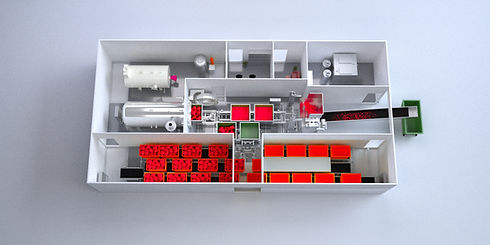

Solution for international waste in airports and ports
ICW/QW poses biosecurity risks.
Many countries lack strict controls; most systems are labor-intensive and leak odors.

EASE’s unmanned solution
-
Fully enclosed and contactless.
-
Zero emissions.
-
Ideal for ports and airports.
EASE SOLUTION
Adopting EASE’s intelligent unmanned facility which can ensure zero contact between the waste and workers as well as zero emission.
International airline and ship waste, also known as International Catering Waste (ICW) or Quarantined Waste (QW), presents unique challenges due to potential biosecurity risks and differing international regulations. International waste originates from international flights, ships and the terminals ports. It includes cabin waste, catering waste, cargo, and other materials discarded during international flight operations.
The waste generated on international flights, ships and in associated terminals and ports can embark invasive species or pathogens, introduce plant pests, diseases, and other contaminants, posing a threat to local ecosystems and agriculture.
It requires special handling, often involving incineration, sterilization, or deep burial to prevent the spread of pests and diseases. The main requirement of treating international waste is to treat it on time and on site to avoid any risk of disease transmission. Moreover, to treat waste on-site requires to comply higher emission standard, it must not pollute the air in airports or ports.
In fact, many countries do not have special classification of international waste and treat them the same way as general waste. Without special regulation to control the transmission of possible diseases, then the risk of unknown virus spread will increase.
Now more and more international airports and ports have built their own on-site international waste harmless facilities, but normally those facilities mainly based on labor work thus increase the possibility of workers getting infected. Also, the workshop is normally not fully closed so there will be odor influencing the neighboring.